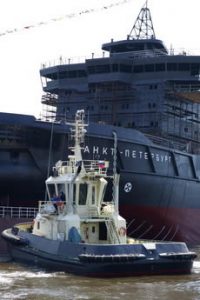The nuclear power debate has surrounded the use of a sustained nuclear chain reaction to generate electricity since the Three Mile Island accident in 1979 and Chernobyl in 1986 and recently Fukushima has reignited the debate. From 1952 to 2011 there have been at least 25 nuclear power plant accidents that had either multiple fatalities or more than US$100 million in property damage. Worldwide there have been a total of 99 accidents at nuclear power plants that either resulted in the loss of human life or more than US$50,000 of property damage.
The Nuclear Debate
Proponents argue that nuclear power is a sustainable energy source which reduces carbon emissions, produces virtually no air pollution and can increase energy security if its use supplants a dependence on imported fuels. They also believe that nuclear power is the only viable course to achieve energy independence for most Western countries. They assert that the risks of storing waste are small and can be further reduced by using the latest technology in newer reactors, and the operational safety record in the Western world is excellent when compared to the other major kinds of power plants.
Opponents say that nuclear power poses many threats to people and the environment. These threats include health risks and environmental damage from uranium mining, processing and transport, the risk of nuclear weapons proliferation or sabotage, and the unsolved problem of radioactive nuclear waste. They also contend that reactors themselves are enormously complex machines where many things can and do go wrong, and there have been many serious nuclear accidents. Critics do not believe that these risks can be reduced through new technology. They argue that when all the energy-intensive stages of the nuclear fuel chain are considered, from uranium mining to nuclear decommissioning, nuclear power is not a low-carbon electricity source. ~Tim McMahon, editor
Chernobyl at Sea?
By John C.K. Daly of Oilprice.com
The Russian Federation is preparing an energy initiative that, if it has problems, will inject nuclear material into the maritime environment.

Baltiysky Zavod is Russia’s biggest shipbuilding complex. According to Voznesenskii, the “Academician Lomonosov” FNPP will be the first vessel belonging to the new line of floating nuclear power plants that can provide energy, heat and water to remote and arid areas of the country, with mass production scheduled for the near future.
The “Academician Lomonosov’s” technology is based on the USSR’s construction of nuclear-powered icebreakers. The Russian media is speculating that the FNPPS will first be used in remote areas of the northeastern Arctic Russia and the Far East, as these regions currently suffer from a lack of energy, slowing their development. Each 21,000 ton vessel will have two “modified KLT-40 naval propulsion reactors” that will provide up to 70 megawatts of electricity or 300 megawatts of heat, sufficient for a city with a population of 200,000 people. Additionally, the floating NPPs can provide water desalination services capable of supplying up to 240,000 cubic meters of fresh water per day.
Perhaps referring to Soviet-era nuclear icebreakers is not such a hot idea, at least for those with historical memories.
Launched in 1957, the Lenin, the USSR’s first nuclear powered icebreaker, was powered by three OK-150 reactors. In February 1965, there was a loss of coolant incident, and some of the fuel elements melted or deformed inside reactor number two. The debris was removed and stored for two years, and subsequently dumped in Tsivolki Bay near Novaia Zemlia two years later. The second accident was a cooling system leak, which occurred in 1967, shortly after refueling.
Not a reassuring development for the Soviet Arctic environment.
“Academician Lomonosov’s” keel was laid in April 2007 at the Sevmash shipyard in Severodvinsk on the White Sea, but the project was subsequently transferred to the Baltiskii Zavod. The “Academician Lomonosov’s” 21,500 ton hull was subsequently launched in 2010, although construction work was frozen in mid-2011because of bankruptcy proceedings against the shipyard. The company was subsequently acquired by state-owned United Shipbuilding Corporation and Rosenergoatom signed a new contract with the Baltiskii Zavod for the “Academician Lomonosov’s” completion. The “Academician Lomonosov” has 69 crew and specialists. Ominously, the “Academician Lomonosov” has no engines, so it needs to be towed. The vessel is equipped with two modified KLT-40 reactors.
But, not to worry.
The Baltiskii Zavod shipyard stressed that The “Academician Lomonosov” and its successors are all designed with a safety margin exceeding all possible threats which makes its nuclear reactors invulnerable to tsunamis and other natural disasters and the ships meet all the requirements of the International Atomic Energy Agency (IAEA) and do not pose a threat to the environment. The factory further states that 15 nations, including China, Indonesia, Malaysia, Algeria, Namibia and Argentina have already expressed interest in buying floating nuclear power plants.
The “Academician Lomonosov”will be sent to Vilyuchinsk, Kamchatka for operational testing. Rosatom then aims to construct seven more FNPPs by 2015, with four of them likely to be located on the northern coast of Siberia’s Yakutia. Other Arctic areas provisionally scheduled to receive FNPPs include port cities along the Russian Federation’s arctic coastal Northern Sea Route and Pevek in Chukotka. An added benefit of the FNPP as envisaged in Moscow is that the provision of nuclear power to the Arctic and Far East will free up more oil and natural gas for foreign export, allowing the Russian federation to generate additional hard currency.
Tow cables snap, Arctic conditions can be unpredictable, ships sink. The ocean is the common heritage of humanity, perhaps the international community should evince a tad more interest in this project.
See Also:
- Energy articles on Financial Trend Forecaster
- The New Cold War: The “Putinization” of Uranium
- Fukushima – Local Children Unwitting (and Involuntary) Radioactive Guinea Pigs




